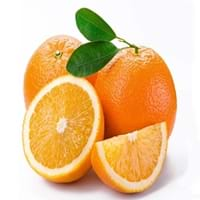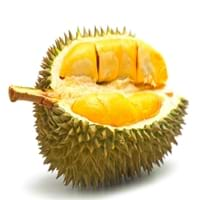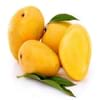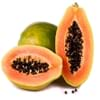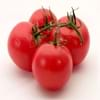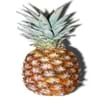Health Benefits
Arthritis treatment, Cancer prevention, Increases metabolic rate, Kidney stone treatment, Lower blood pressure, Prevents constipation, Prevents diabetes, Strengthening of bones, Ulcer treatment, Weight loss properties
Anti depressant, Boosts immune system, Cancer prevention, Heart care, Reduces stress
General Benefits
Boosts immune system, Controls blood pressure, Digestive aid, Improves eye vision, Maintains healthy cholesterol level
Anti oxidant properties, Anti-inflammatory properties, Boosts immune system, Controls blood pressure, Controls blood sugar levels, Digestive aid, Flu treatment, Strengthens bones
Skin Benefits
Anti-aging benefits, Brightens and lightens complexion, Hydrates skin, Skin rejuvenation, Treatment of acne, Treatment of dark spots
Anti-aging benefits, Brightens and lightens complexion
Hair Benefits
Good conditioner, Prevents hair loss, Regulates hair growth, Treatment of dandruff
Promotes longer and healthier hair, Protects hair
Allergy Symptoms
Abdominal pains, Breathing difficulty, Coughing, Diarrhea, Drop in blood pressure, Fainting, Runny nose, Skin rash, Sneezing, Swelling of mouth, tongue or lips, Vomiting
Diarrhea, Headaches, Hives, Nasal congestion, Red rash, Runny nose, Vomiting
Side Effects
Abdominal cramps, Diarrhoea, Weight gain
Affects blood glucose levels, Nausea, Stomach pain
Best Time to Eat
As a snack in the late afternoon, Don't consume at night and before bed, Eat the fresh ones, avoid mixing with any other foods, don't eat after meal., Morning time (before lunch), Strictly avoid empty stomach
Along with meal, As a snack in the late afternoon, Don't consume at night and before bed, Morning time (before lunch)
Vitamin B5 (Pantothenic Acid)
Vitamin C (Ascorbic Acid)
Vitamin E (Tocopherole)
Not Available
Vitamin K (Phyllochinone)
Not Available
Lutein+Zeaxanthin
Not Available
Calories in Fresh Fruit with Peel
Not Available
Calories in Fresh Fruit without Peel
Calories in Canned Form
Not Available
Calories in Pie
Not Available
Type
Citrus
Tree fruit, Tropical
Varieties
Sweet Orange - Persian orange, Navel orange, Valencia orange and Blood orange. Sour Orange - Seville orange, Bergamot orange, Chinotto orange and Daidai.
D24, D99 (Gob kecil), D123 (Chanee), D145 (Beserah), D158 (Gan Yau), D159 (Monthong), D169 (Tok Litok), D188, D189, D190, D163 (Hor Lor) and D164 (Ang Bak)
Inside Color
Orange
Yellow
Taste
Sweet-Sour
Creamy, Sweet
Origin
South-Eastern Asia
South-Eastern Asia
Grows on
Trees
Not Available
Soil Type
Loam, Sandy loam
Clay
Climatic Conditions
Hot
Hot, Humid
Facts about
- There are around 600 varieties of oranges available worldwide.
- More than 1 plant can grow from a single orange seed.
- Orange and orange blossoms are a symbol of love.
- Orange tree is usually propagated by grafting.
- 1 kg of durian contains 1350 calories which may cause weight gain.
- It may have a hyperthermic effect on the body, making you feel warmer.
- Study shows that durian has an ability to reduce infertility in men & women.
Top Producer
Brazil
Thailand
Other Countries
China, Egypt, India, Italy, Mexico, South Africa, Spain, Turkey, United States of America
Indonesia, Malaysia, Philippines
Top Importer
Germany
China
Top Exporter
Spain
Thailand
Botanical Name
Citrus sinensis
Durio zibethinus
Synonym
Citrus aurantium L. var. dulcis
Lahia Hassk
Subkingdom
Tracheobionta
Tracheobionta
Division
Magnoliophyta
Magnoliophyta
Class
Magnoliopsida
Magnoliopsida
Subclass
Rosidae
Dillenhidae
Order
Sapindales
Malvales
Family
Rutaceae
Malvaceae
Species
C. × sinensis
D. zibethinus
Generic Group
Citrus fruit
Not Available
Difference Between Orange and Durian
We might think that Orange and Durian are similar with respect to nutritional value and health benefits. But the nutrient content of both fruits is different. Orange and Durian Facts such as their taste, shape, color, and size are also distinct. The difference between Orange and Durian is explained here.
The amount of calories in 100 gm of fresh Orange and Durian with peel is 63.00 kcal and Not Available and the amount of calories without peel is 47.00 kcal and 147.00 kcal respectively. Thus, Orange and Durian belong to and category.These fruits might or might not differ with respect to their scientific classification. The order of Orange and Durian is Sapindales and Malvales respectively. Orange belongs to Rutaceae family and Durian belongs to Malvaceae family. Orange belongs to Citrus genus of C. × sinensis species and Durian belongs to Durio genus of D. zibethinus species. Beings plants, both fruits belong to Plantae Kingdom.
